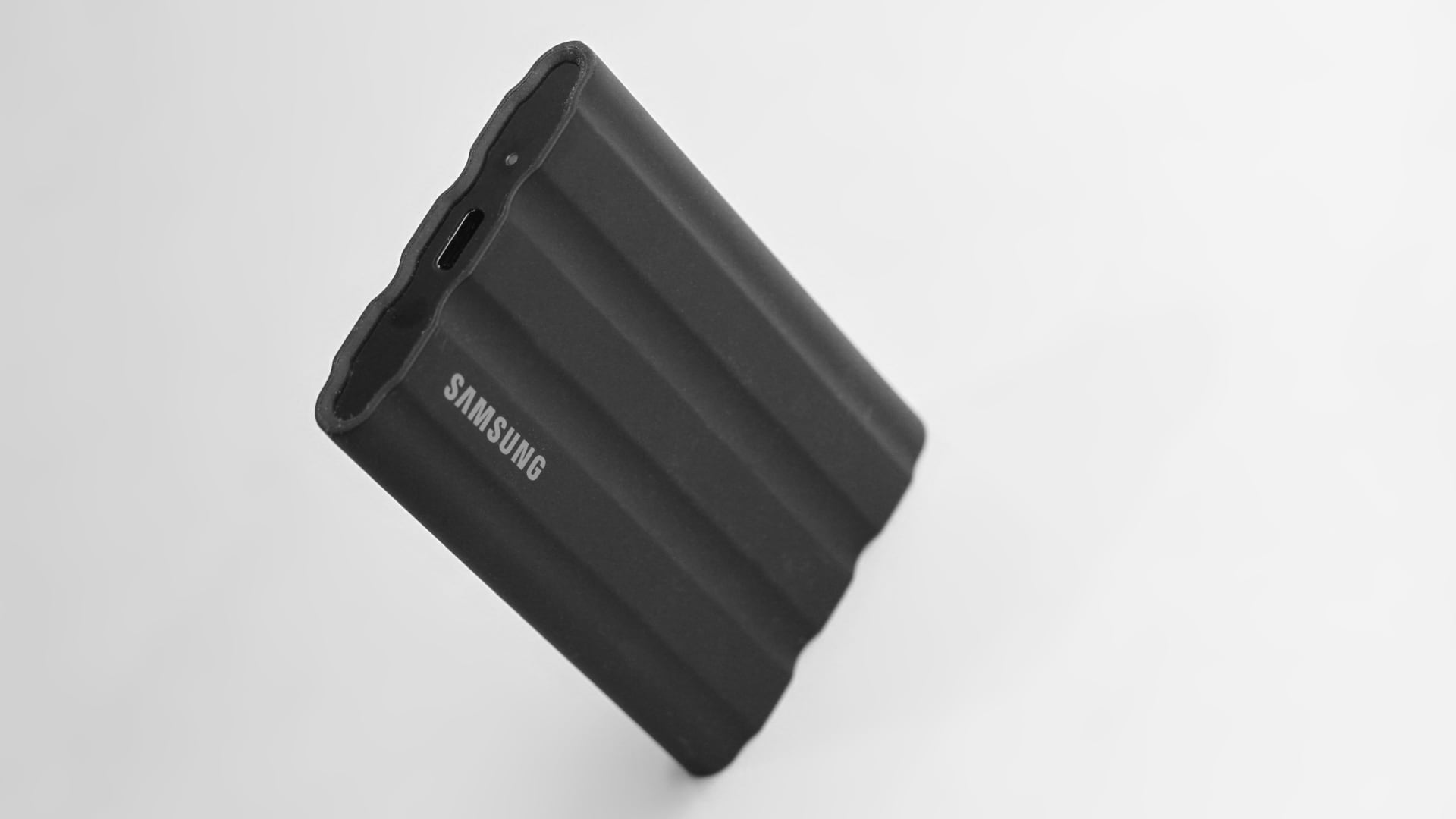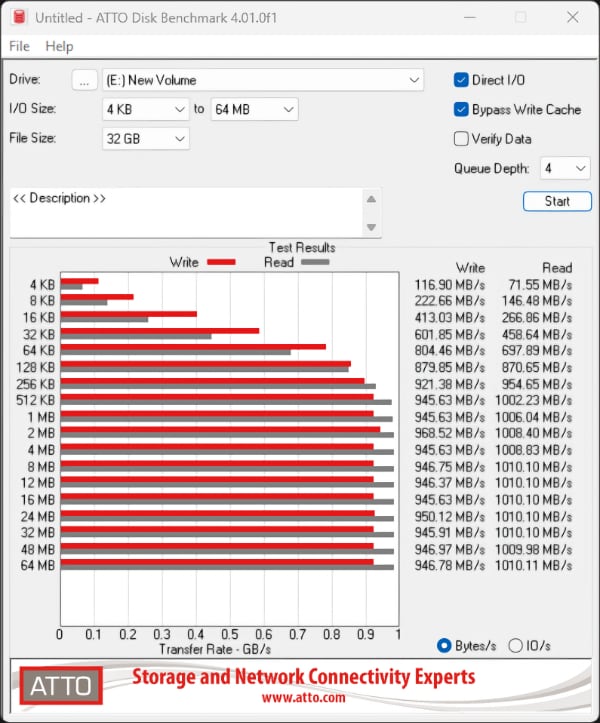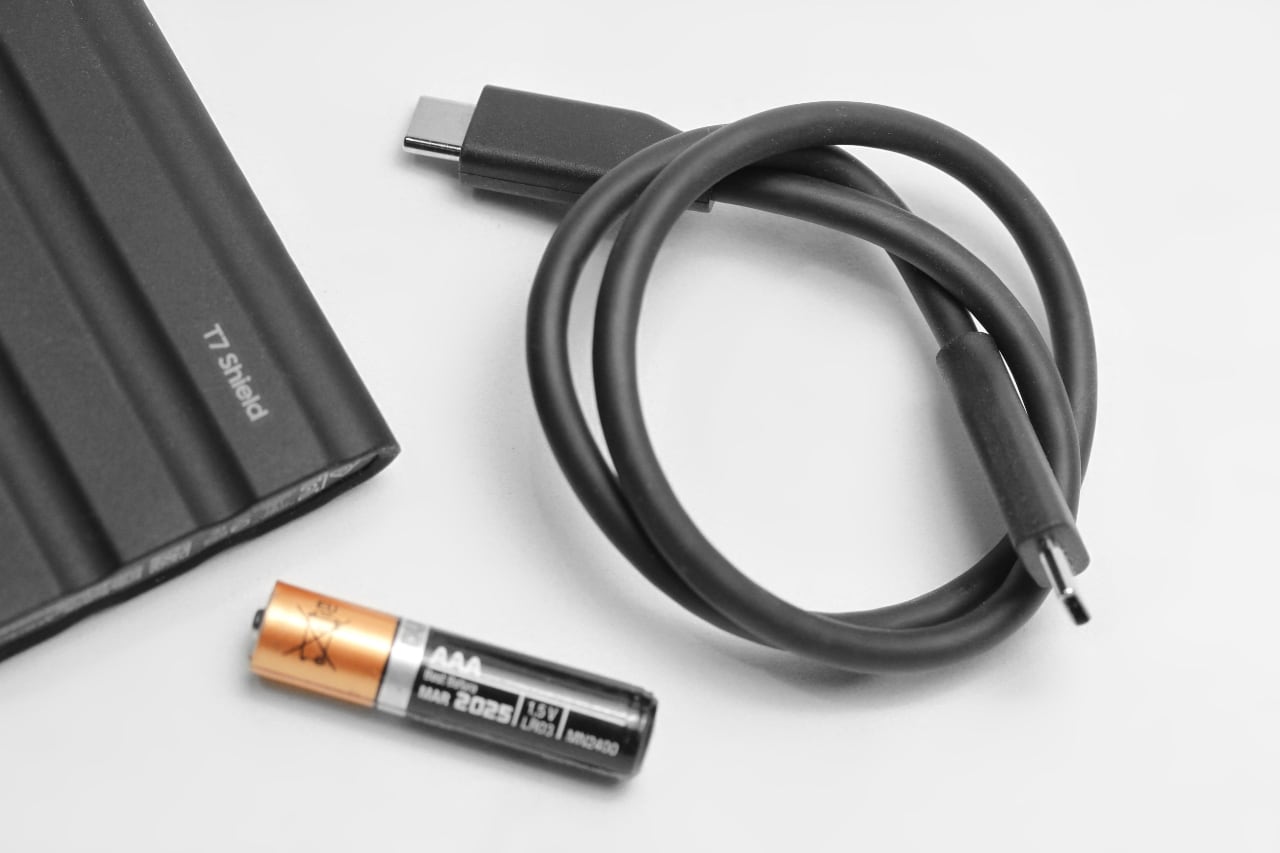
The latest 4TB T7 Shield from Samsung offers a lot of storage for $300 and you can even drop it 10 feet (though try very hard not to).
Sometimes, when we’re making movies, we need somewhere to put a lot of things very quickly. One option is Samsung’s T7 series, which is part of quite a wide selection of flash-based, USB-attached solid state storage in 2023. Let’s see what it can do to distinguish itself.
What’s new here is that the T7 has not previously been available in a 4TB capacity, a welcome bit of progress that’s somewhat emblematic of the wider market, and you should be able to pick it up widely for around $300 or equivalent. It’s easy to get the impression that the physically a lot bigger than it really is; this is not an SSD in the vein of (increasingly historic) devices built in the form factor of 2.5” hard disks. It’s certainly smaller than those overall, although the silicone jacket makes it a shade thicker. The “shield” moniker refers to that rubberised coating, which the company suggests increases drop resistance to three metres.
Anyone dropping the day’s rushes the best part of ten feet is likely to face some harsh words from the boss, whether the data survives or not, although that really depends whether there’s still anyone still hanging around once we’ve finished duplicating those rushes. In many industries, fast storage is a convenience. In the film industry, fast storage means getting home to one’s family sooner.
Samsung predicts data rates around the 1GB per second mark, and tests bear that out. As ever, writes are a fraction slower than reads for anything bigger than a ludicrously tiny I/O size. Assuming we’re sending chunks bigger than about half a megabyte (which we very certainly will in any practical circumstances), the device writes at around 945MB/s, and reads at a hair over 1000.
Check your cables
If yours fails to do this, check the cabling you’re using - this is a USB 3.2 generation 2 device, and maximum performance requires compatible cabling (if it feels like the revisions of USB are increasingly comprehensible with reference to written notes, well, you’re not wrong, but that’s not something Samsung controls).
Recent USB revisions (and Thunderbolt) have gained a rather unfair reputation of being picky about cabling. The truth is that they both require the proper cables to hit peak performance, or they’ll tend to fall back to earlier (slower) versions. Some USB-C cables will cause this problem, although the included cables work very reliably at full speed. USB 3.2 gen 2 will theoretically hit 2500MB/s, so the T7 certainly isn’t being limited by the bus.

The falloff at the top of the chart refers only to very (very) small IO sizes; above half a megabyte (which everything will be) performance quickly rises to fulfil the spec
There are faster SSDs available - 1TB and 2TB versions of the G-Drive Mobile Pro SSD advertise nearly three times the speed. That’s fast enough to saturate a USB 3.2 gen 2 connection, so those are Thunderbolt 3 devices, doubling available bandwidth. They’re also considerably more expensive than the equivalent size of T7. A 2TB Samsung T7 Shield goes for £175 or so, whereas the 2TB G-Drive Pro is often more than five times the price.
Incidentally, drop the “shield” and Samsung gets about 15% cheaper again; whether that matters to you probably depends on the ham-fistedness of your crew.
There isn’t - yet - a 4TB version of the G-Drive, which prompts us to start thinking about the type of flash memory underlying devices like this. Most flash memory is blisteringly fast. The really incredibly fast stuff, the sort of thing that’s used in the flash magazines on Vision Research’s Phantom high speed cameras, is single-level cell which stores just one bit in every location on the device, but is faster; triple- or multi-level cell packs in more bits, but doesn’t quite have the performance of SLC.
Capacity

USB C-C and A-C cables are included. Neither is that long, but both work reliably; the battery is included for scale
At 1000MB/s, the 4TB T7 will fill itself to capacity in a hair more than an hour. There are faster camera cards (4TB CFExpress can exceed 1700MB/s, though, again, they’re expensive). In the end, all of this comes down to the intended application. For everyday home and office situations, a 4TB pocket SSD (and the T7 series are very pocketable) feels extravagant, but as we’ve pushed for better and better cameras, recording more pixels in more bit depth, 4TB might be one magazine, one reload, and it might all be in a morning’s work.
Shoot 12K at 30 frames on an Ursa in 3:1 Blackmagic raw, and you’ll be recording at more or less the same data rate the T7 can handle, though your offload to the T7 will naturally happen continuously, whereas you’re unlikely to be shooting huge continuous hour-long takes at the same time. On hugely upscale shoots – Alexa 65 in uncompressed raw, say - the T7 will be something for the editor or producer to use to shuttle transcodes home. On smaller shows, it might be for the rushes themselves.
Either way, the price-space ratio is attractive, and therefore an interesting option for people not flush with thunderbolt connectivity.
Tags: Production Storage


Comments